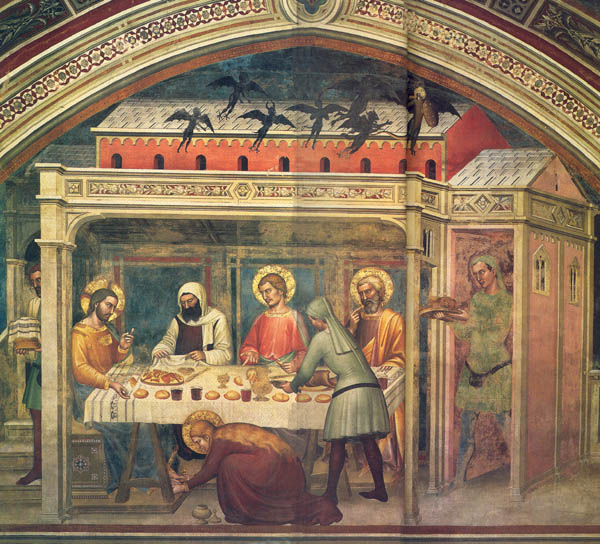Image Details

Scala/Art Resource, New York, NY
“The sinner in the city” (Luke 7:37) crouches beneath the table to anoint Jesus’ feet with fragrant oil from her alabaster flask. Later tradition identifies this woman, who also “washed Jesus’ feet with her tears, wiped them with the hair of her head, and kissed them,” as Mary Magdalene, but nowhere in the Gospel account is she so identified. In this fresco, in the Santa Croce church in Florence, Italy, depicting the meal in the Pharisee’s house, seven winged demons—a reference to the seven demons that Jesus exorcised from Mary Magdalene (Luke 8:1–3)—hover over the scene of Jesus with the Pharisee and two disciples. In this work, the artist Giovanni da Milano (active 1346–1366) follows the tradition that identifies the woman with Mary Magdalene. Today, however, Roman Catholic, Eastern Orthodox and Protestant doctrines agree with modern scholarship that Mary Magdalene and the sinning woman are not the same person.
In the accompanying article, Professor Schaberg demonstrates that the popular image of Mary Magdalene as a repentant prostitute has no Gospel foundation. To the contrary, Mary Magdalene appears to have been an important figure among Jesus’ followers, and her position as a witness of the crucifixion and resurrection lent apostolic authority to women before interpretive legends distorted her legacy.
